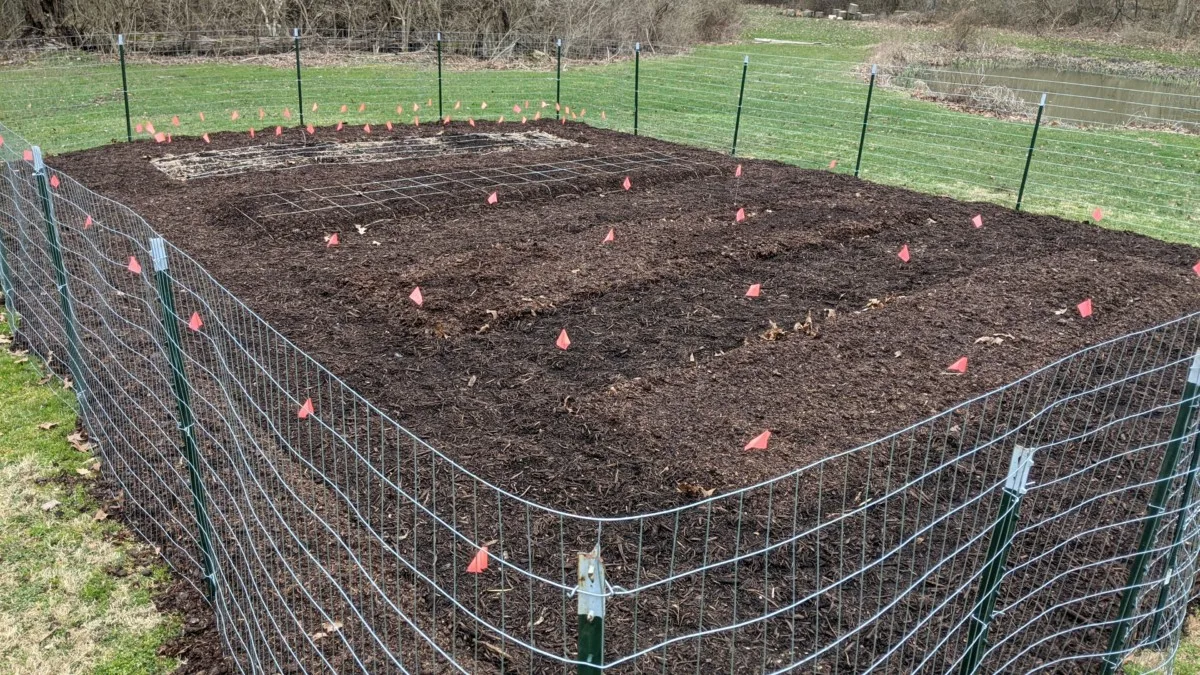
For many of us, planning our garden is one of the things we enjoy about gardening. For others, planning is less of a priority and more of an afterthought. But if you’re serious about a successful growing season, there are a few questions you should ask about the last one before you put a single seed in the ground.
Plan to Plan
I don’t know about you, but I love planning my garden, sometimes more than my actual garden, because it’s perfect. Everything is neat and tidy, all laid out on graph paper and placed with thought and care: no pests, no disease, and no weather issues. On paper, it’s the perfect garden.
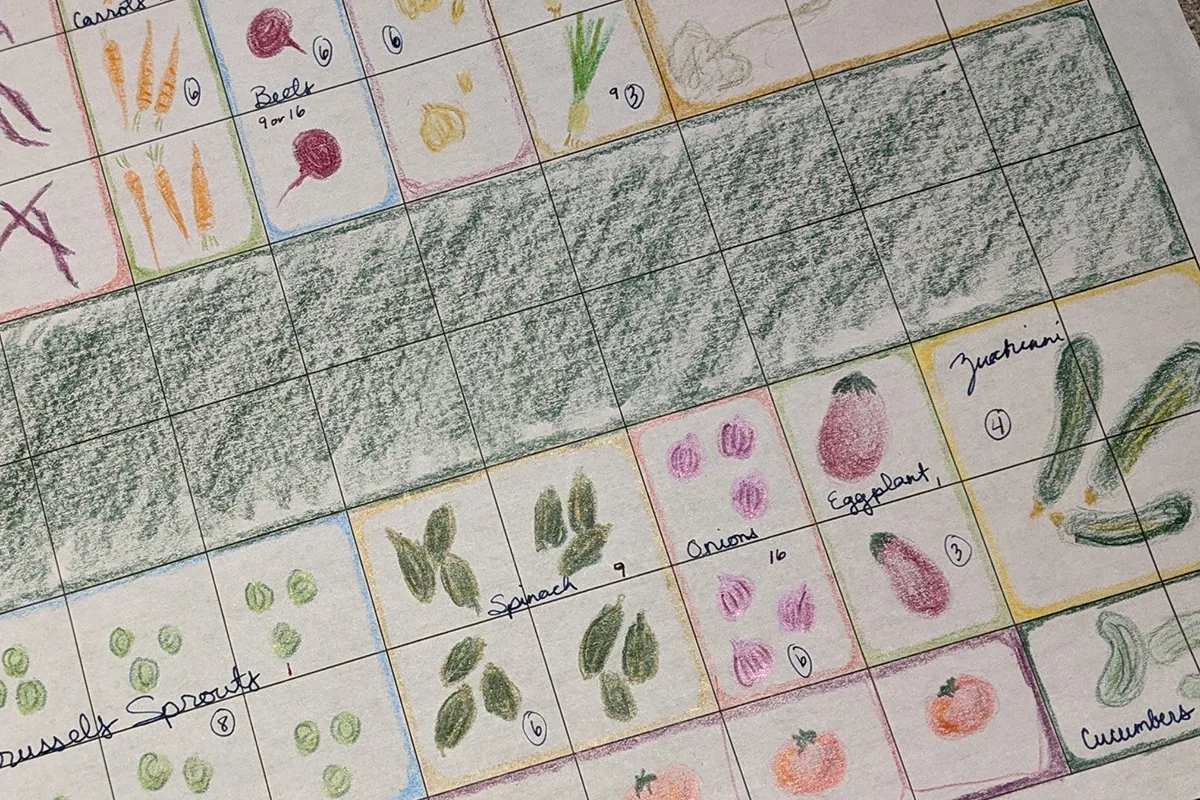
But whether you’re like me and spend a lot of time planning or you’re a “plant on the fly” gardener, we should all look at last year’s successes and failures. There’s plenty of information there we can use to make the coming growing season easier.
For those who don’t plan out their garden (I’m trying hard not to judge you.), I encourage you to sit down with this article and a pen and paper and make some notes. Use them when you’re out there poking transplants in the dirt. Why?
Planning your growing season helps you:
- learn from past season mistakes.
- incorporate new varieties.
- visualize plant spacing and heights and make adjustments before they’re in the ground.
- implement companion planting.
- take advantage of crop rotation.
- see if you have space for everything you want to grow.
- manage pests and disease.
How Does Your Garden Grow?
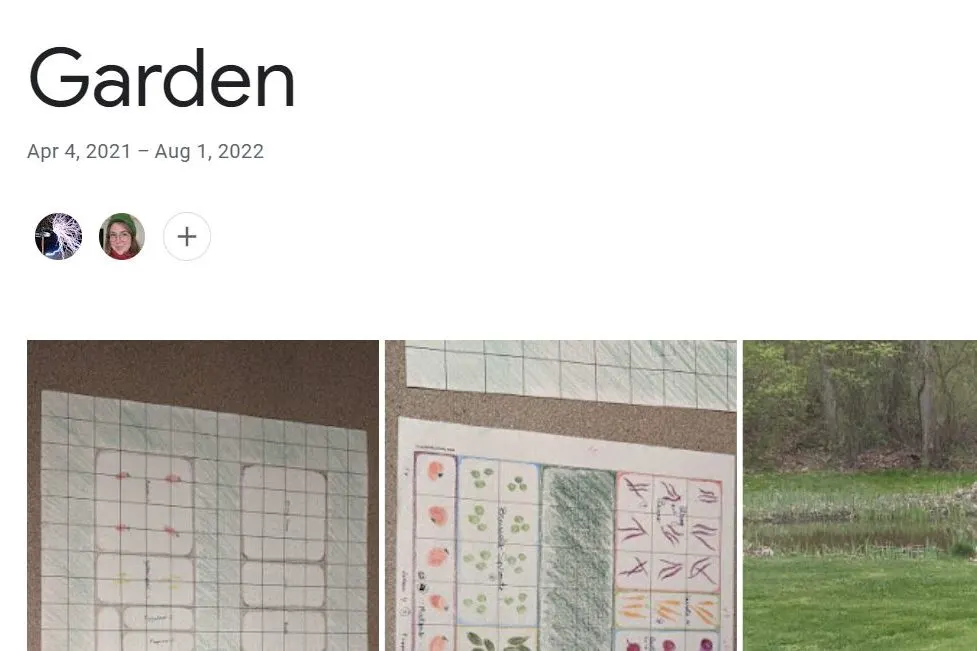
Recording all that happens during a season provides a wealth of knowledge about your garden, but only if you document it. While it’s great to recommend a garden planner, it’s only helpful if you prefer paper and are diligent about using it.
You need to use a method of documenting that you’ll stick with. I recommend something easy to use that can go in the garden with you.
Every year, my dad would order the annual Farmer’s Almanac Planner. And every day, he would jot down notes about the weather, the garden, and the homestead. By the next spring, he had a book full of helpful notes.
I can’t do that. I’m terrible at journaling every day. My phone is my tool for recording my season through photos and notes. I still maintain a paper garden journal, but it’s more for fun and stress relief. The brunt of my planting information is in my phone.
Be honest with yourself.
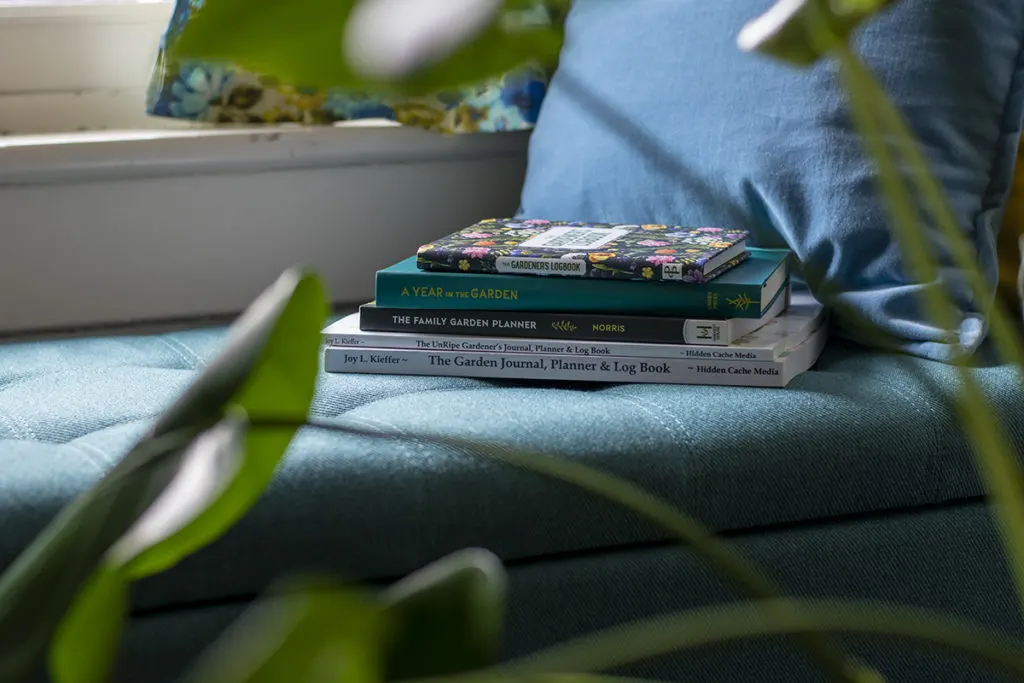
If you want that pretty garden planner with all the fancy tabs and artwork but know you’re terrible at journaling, maybe that’s not the best option. Instead, choose a system that plays to your strengths.
Look for a gardening app you like. Or snap a few photos each time you head out to the garden. Set up an album in your photo managing app dedicated to that year’s garden pics, and share it with your partner so they can add photos too. Make notes in Keep or another app. (Go ahead and buy the planner, too, if it makes you happy.)
Questions to Ask About the Last Growing Season
Grab a pen, paper, and your favorite beverage, and set aside time to answer these questions. Draw pictures if it helps, and refer to seed packets and any documentation you have from last year. Check out photos from last year’s garden to help jog your memory. You’ll finish with a significant head’s up on a great garden this year.
1. Last Year’s Garden Was ______
This is a great question to get the gears turning. How was your season overall? What stands out a year later? Was it a great season? Was the weather a challenge? Were the tomatoes chef-kiss amazing last year?
2. What Pests Did You Encounter?
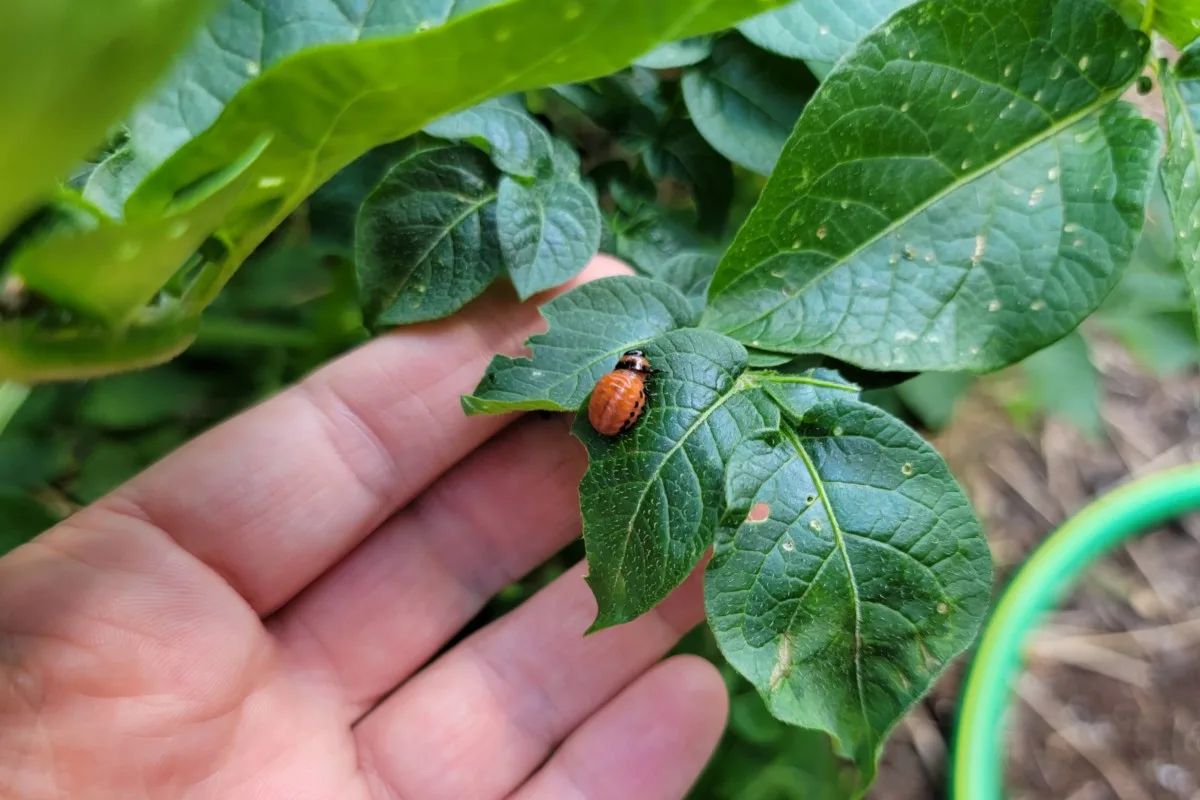
This is an important question, as some pests can winter over in the soil. Tomato hornworms, Colorado potato beetles and squash borers are a few.
Knowing what pests popped up and where means you can avoid planting their favorite foods in the same spot. (Another great reason to employ crop rotation.)
You may choose to use neem oil and do a soil drench in that area. Just be mindful that even with a natural and organic solution like neem, you’re killing more than the intended pest.
3. How Did New Varieties Fare?
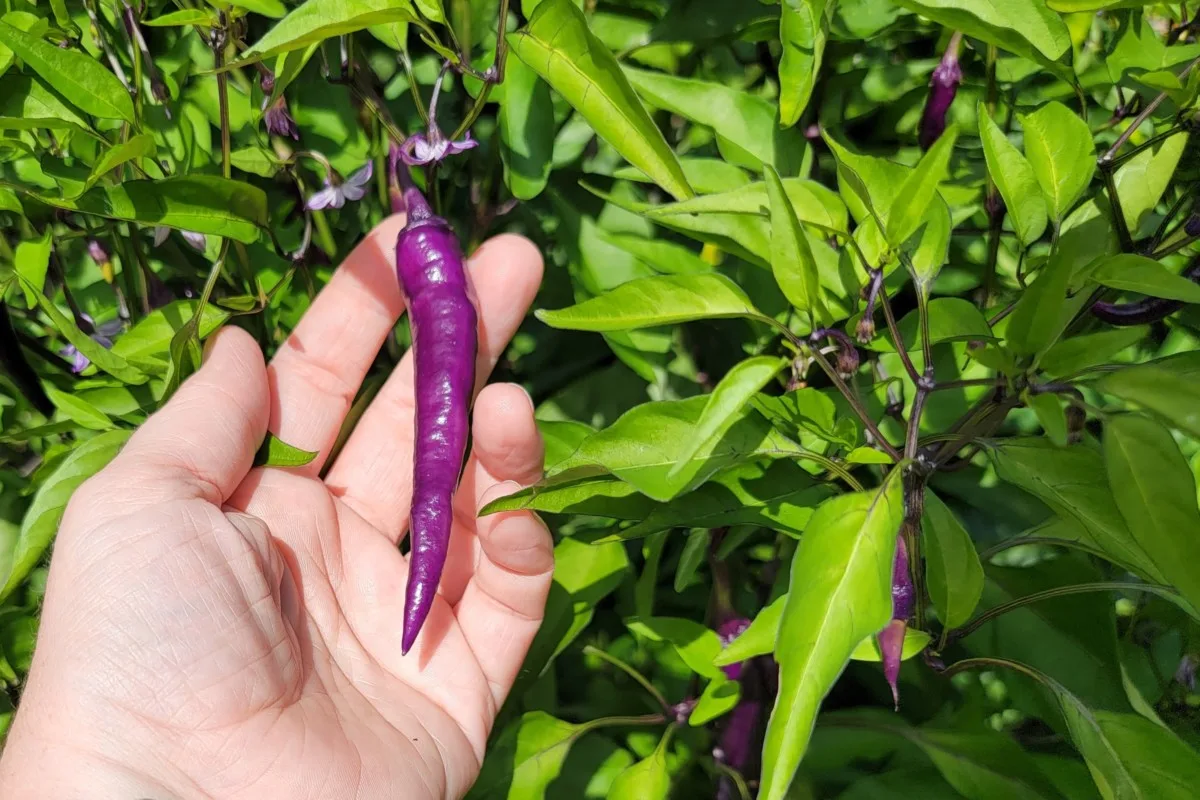
It’s hard to resist all the cool new veggie seeds when the seed catalogs start arriving. So, most of us don’t.
If you planted a new variety last year, how did it do? Was it fun but not something you would plant again? Is it going to be your go-to tomato, bean, what-have-you? How was the yield in comparison to other varieties of this plant? How about the flavor? Does it deserve a spot in your garden again this year? And if so, are you going to stop planting something else?
4. Did You Fertilize and Where?
Over-fertilization is a huge problem, especially if you’re using synthetic fertilizers. Unabsorbed fertilizer can get washed into streams, lakes and rivers by the rain.
As gardeners, we’re guilty of liberally applying fertilizer without bothering to test the soil and see if it’s needed. Take note of the crops you fertilized last year and where they were in the garden. Also note where beans, peas and other nitrogen-fixing crops were planted. Test your soil, taking samples from different areas. This will give you a better idea of whether or not you even need fertilizer.
5. What Crops Didn’t Do Well?
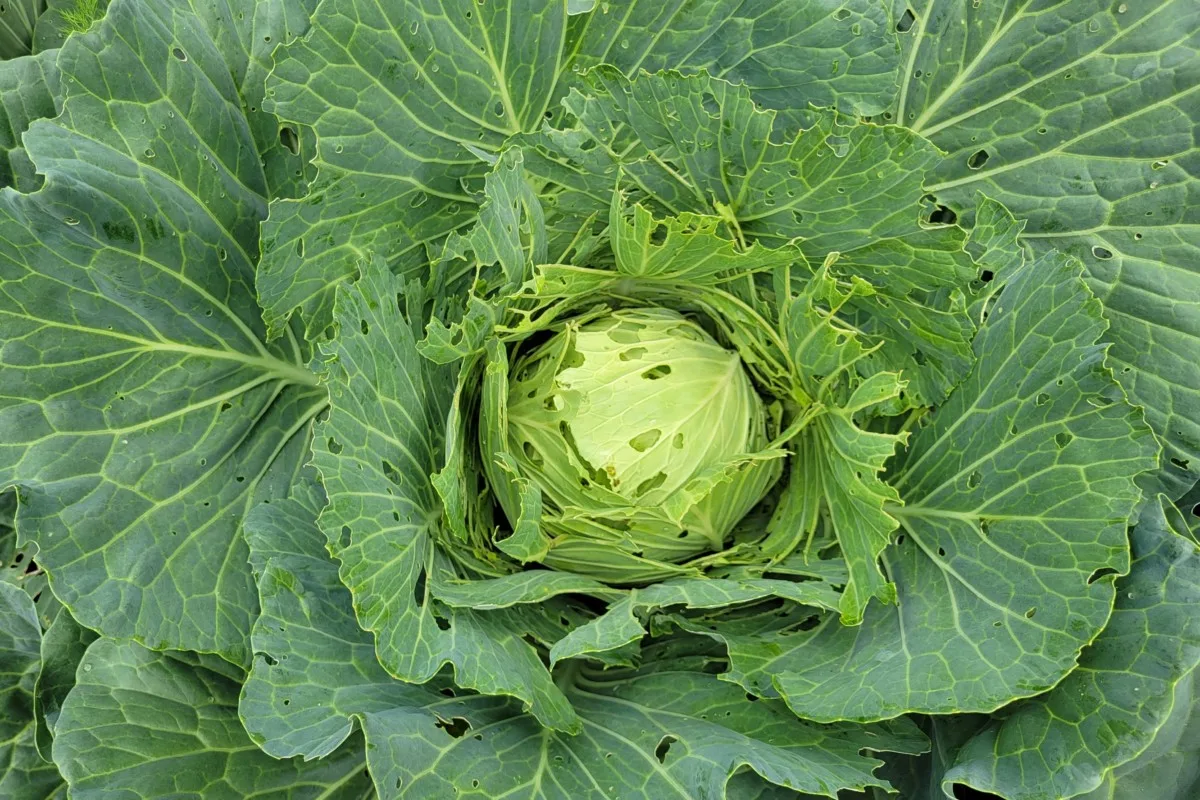
Make a note of which crops were a bust last year. Now is the time to look at what went wrong to prevent the same thing this year.
Was the location wrong – too much shade or sun, crowded out by a larger plant, etc.? If it was a plant with support, would a different support system work better, for instance, espalier tomatoes instead of the Florida Weave? Was watering or drought an issue? What can you do differently to mitigate the problem? Or was it the variety? Do you want something with a better yield or flavor? Make a plan now.
6. I Wish We Had Planted More_______
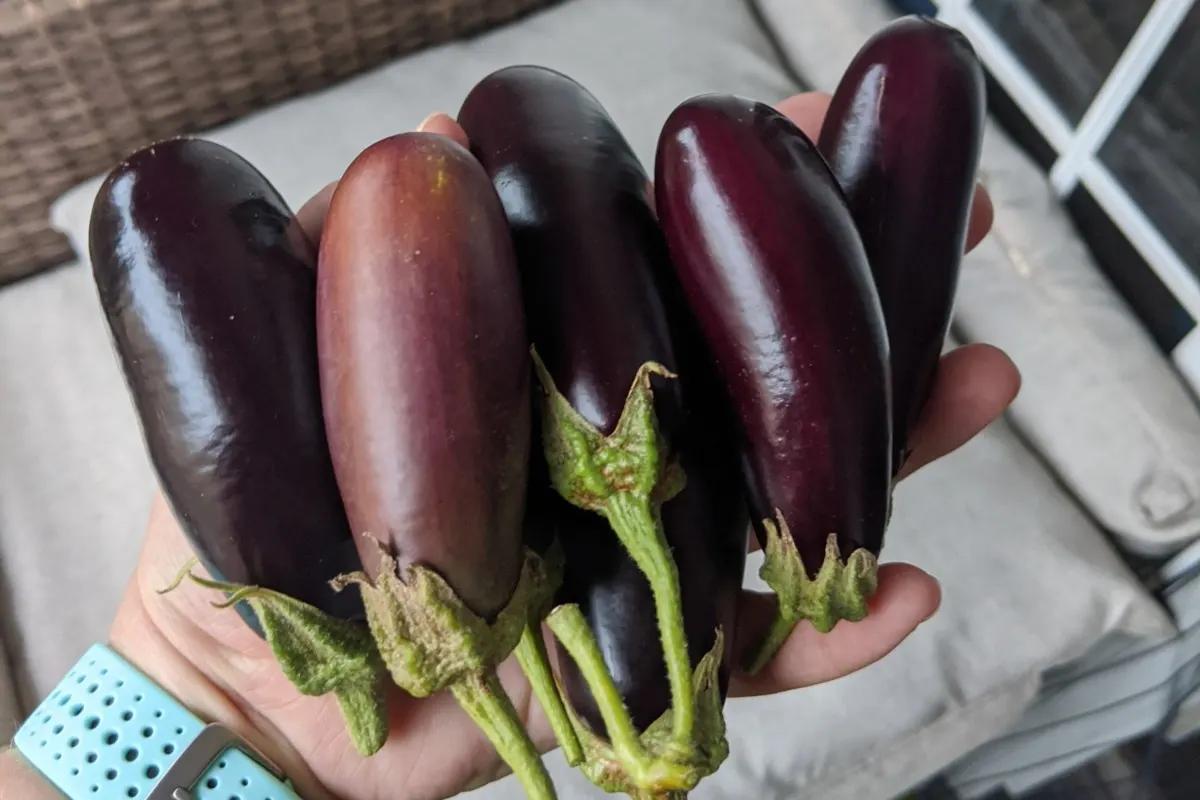
This is a practical question, especially if you preserve all or part of your harvest. Sometimes it’s hard to judge how much of one crop you’ll want at the beginning of the year. But boy, you sure notice when you find yourself heading to the supermarket to purchase produce in July because you didn’t plant enough of something. And you don’t want to run out of homemade tomato juice when it’s only December.
7. I’m Done Growing _______
Alternatively, you may find crops you don’t wish to grow this year or ever again. The sweetheart and I grew cucamelons for a couple of years but finally admitted to one another last year that we weren’t all that chuffed about their flavor.
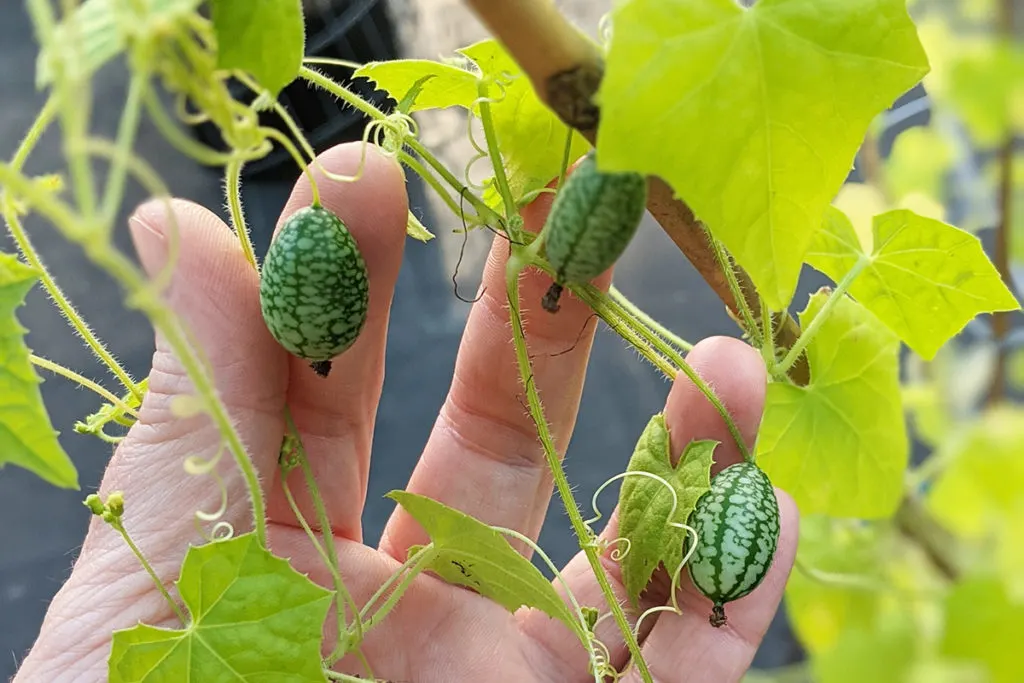
Maybe you’ve been struggling to grow a certain crop and are unwilling to put in the effort or commit the garden space to another lackluster harvest. I’m looking at you, cauliflower.
There’s nothing wrong with saving that space for something else and hitting up the local farmer’s market for the things you don’t want to bother with.
8. Did I Utilize the Space Well?
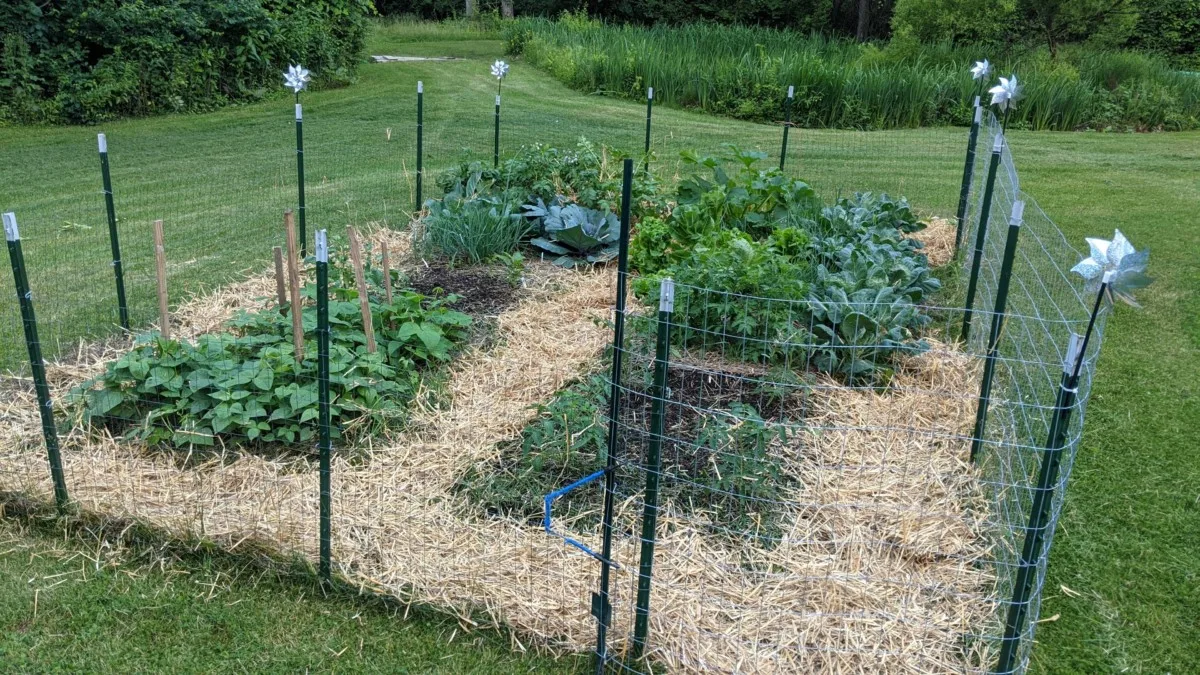
Did you have enough room to grow everything you wanted last year? Did the garden feel overcrowded once all the plants were mature, or was there a lot of unused space? Were the paths wide enough? Do we need to expand the garden this year, or could a different growing method, like square foot gardening or interplanting of different species, utilize our space better?
How did you do with intermittent planting? Were there times when portions of the garden were empty? Can I plant cool-season and warm-season crops better, so I’m not left with bare soil (not a good thing) during certain times?
9. Did We Have Enough Crops When We Wanted Them?
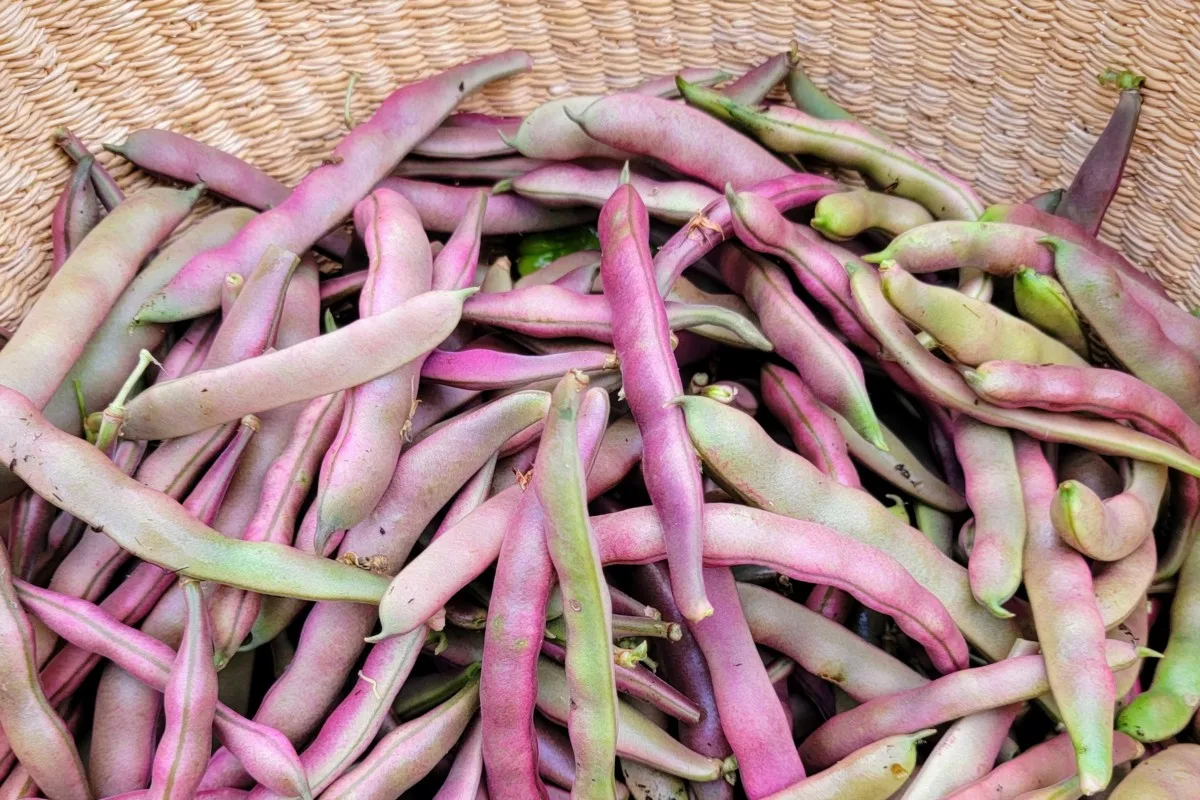
Some crops, like beans, can be succession planted to harvest over a longer stretch rather than all at once. Think about these types of crops and how you use them. Do I need several plantings over several weeks, so I’m not hit with a huge harvest all at once? Or are there crops that I should plant all at once to make canning and preserving easier? Perhaps a bit of both for fresh eating and preserving?
10. I Wish ______ Was Easier This Year
Was watering a hassle? Were the weeds unbearable? If something is easy to do, you’re more likely to stick with it. Take a look at the garden chores last year that were a real…chore, and look into ways to make them easier.
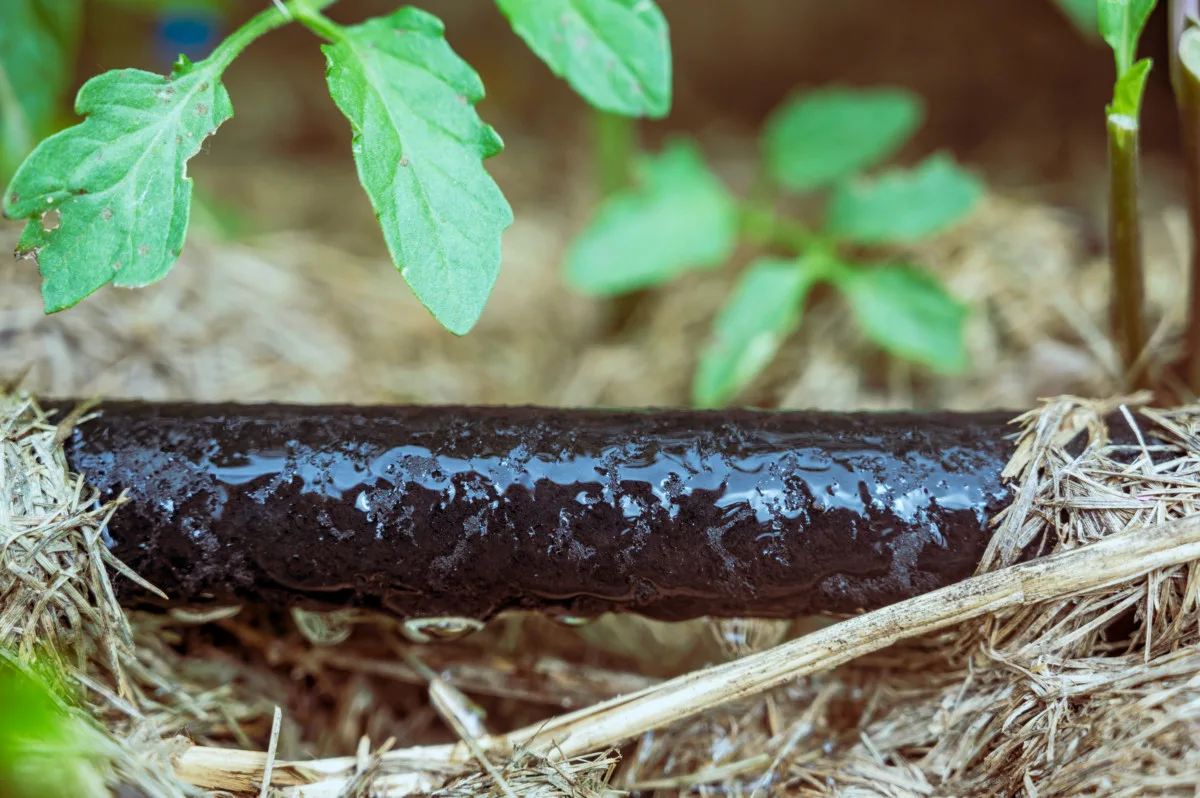
For instance, watering has always been a pain. We use a soaker hose set up, but we would often turn it on, get busy with something else, and forget it was on for several hours. My sweetheart invested in a B-Hyve Smart Hose Faucet Timer last year. Suddenly, watering was as easy as tapping a button on the app. The water turned on for a set time, and then the hose would shut off. Voila – no more wasted water and no worrying about watering while we were away.
11. Was Working in the Garden Comfortable Last Year?
Look, I am not afraid to admit I have reached the age where gardening takes its toll. Gardening should be enjoyable. If it isn’t, what needs to change this year? Do you need to ditch that old, paper-thin knee pad and upgrade to something thicker and cushier? (Your knees will thank you; ask me how I know.) Was the sun a constant bother; in your eyes or on the back of your neck? Invest in an extra large, floppy gardening hat and a neck gaiter. Is getting up after you’ve been on the ground difficult? Perhaps it’s time to look into some tall raised beds.
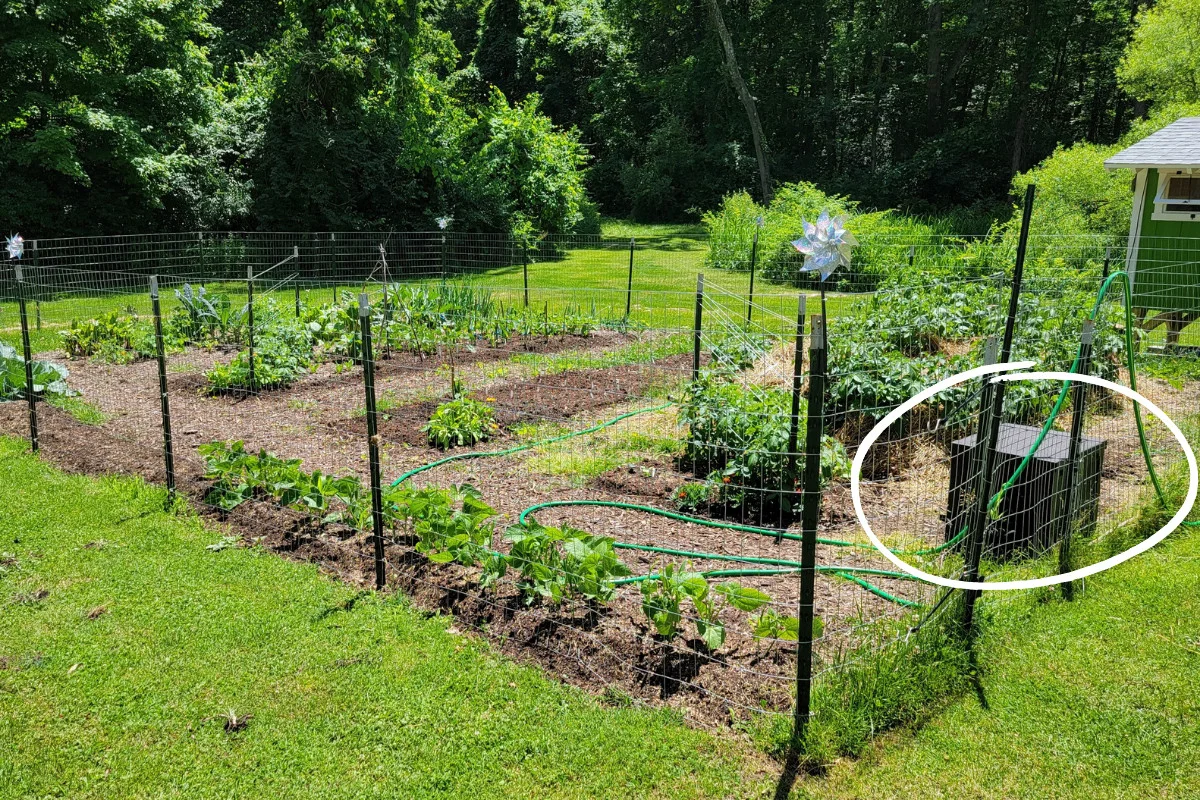
One of the smartest things I did last year to make gardening more comfortable was to invest in a weatherproof outdoor box that I kept in the garden.
I put my kneeling pad, hand tools, neem oil spray, sunscreen, gardening gloves, a notepad and pen, fertilizer and twine inside. It saved me many back-and-forth trips to the house or the workshop. Plus, it was a perfect spot to sit, sip iced tea, and admire my handy work whenever I needed a breather.
12. I’m Super Excited to Try ______ This Year
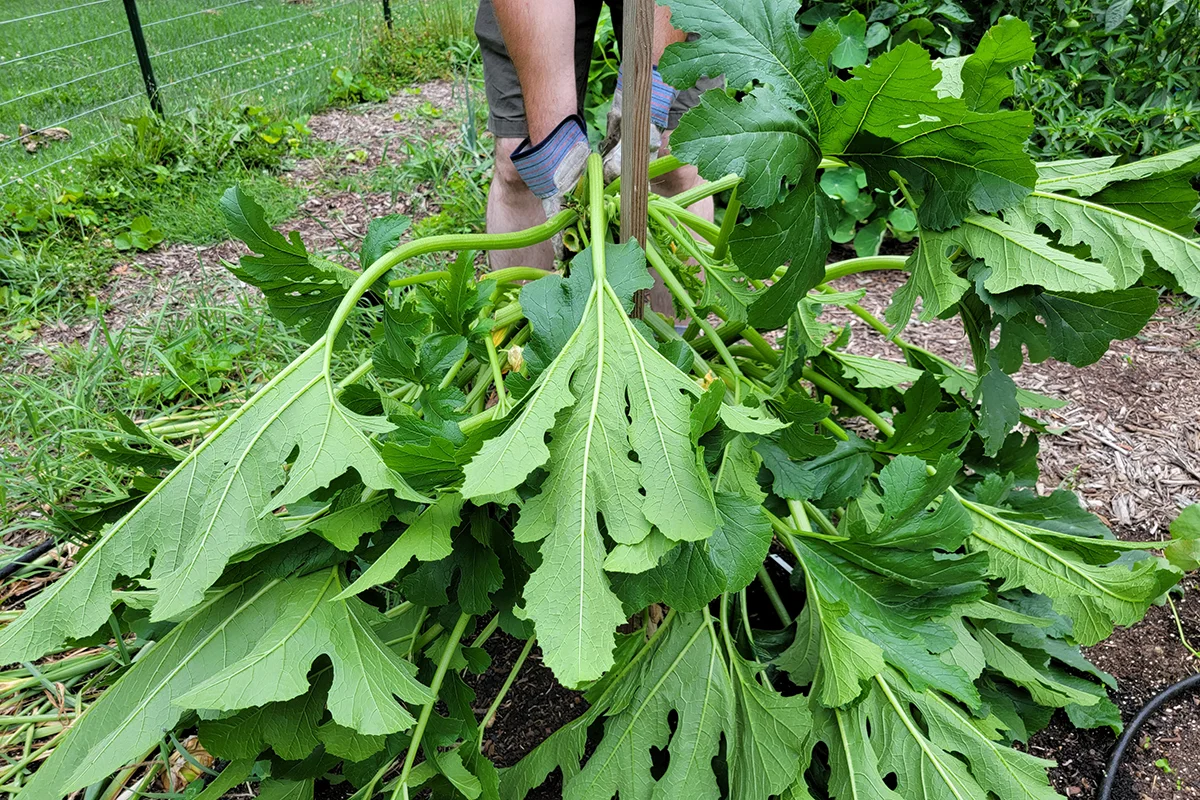
You know that thing you’ve been looking forward to all winter long? Like that new tomato you found on Rareseeds.com, training zucchini to grow staked, finally going no-dig, or growing an all-purple vegetable garden, now is the time to get planning. What do you need to purchase? Do I have to change anything about my existing setup? Should I enlist some help or ask for advice?
That wasn’t so bad now. Condense your notes into a list of items you need to purchase, a pre-season to-do list and a final list of any other questions you need to answer or further research you need to do. You are well on your way to a successful growing season, my friend.

Get the famous Rural Sprout newsletter delivered to your inbox.
Including Sunday musings from our editor, Tracey, as well as “What’s Up Wednesday” our roundup of what’s in season and new article updates and alerts.

